Teaching and research
A faculty member’s time is generally distributed among teaching, research and service, in accordance with the Collective Agreement.The typical distribution is 40/40/20, or 70/10/20 for faculty hired into teaching-stream appointments.
Teaching
Faculties—through deans, chairs, directors and faculty members—are responsible for academic decisions related to pedagogy and curriculum. Faculties and units have unit standards that help determine the delivery of education to students in terms of teaching assignments while ensuring faculty have time to pursue research, scholarly activity, and/or service activities.
The university encourages units and leaders to recognize the importance of equitable teaching loads and efficiencies, and other pedagogical decisions that are within the scope of Faculties. The University also works to support Deans in allocating resources to help meet enrolment growth, section sizes and teaching assignments.
UVic offers about 4,000 undergraduate course sections per academic year, which has remained consistent over the past 10 years.
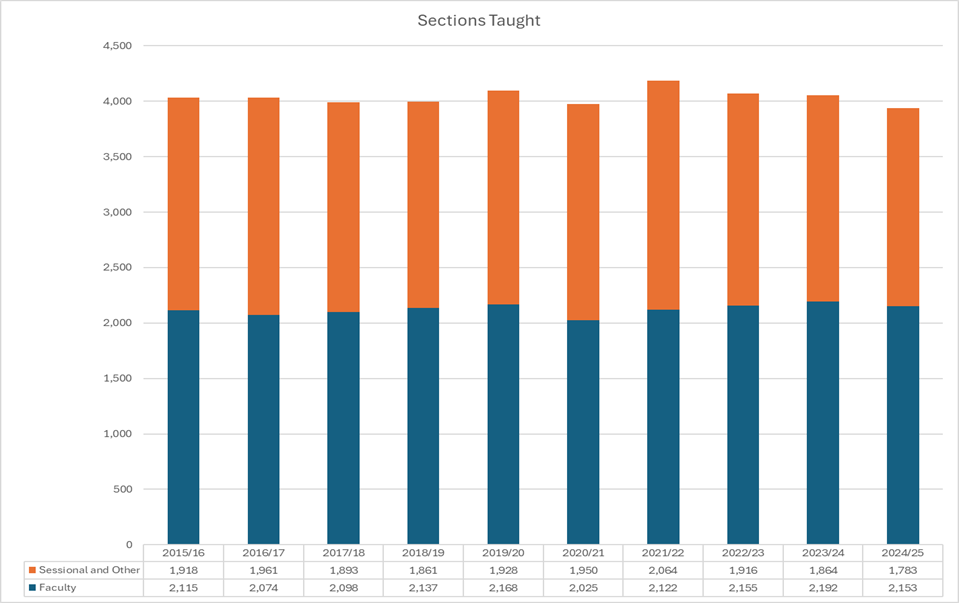
In the most recent academic year, faculty members taught 55% of course sections (2,153 sections). Source: Banner HR and Banner Student.
Based on grant funding provided by the Province of BC to educate students, the VPAC Office works with Deans to set overall enrolment targets for Faculties on a taught-FTE basis (called EETs at UVic or course-FTEs in other jurisdictions).
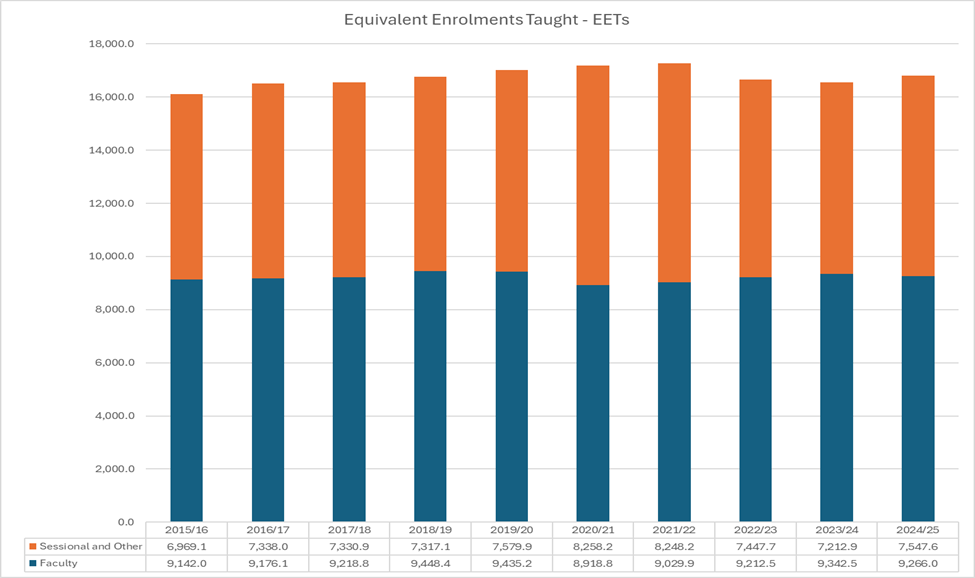
In the most recent academic year, faculty members taught 9,266 out of 16,813 EETs. Source: Banner HR and Banner Student.
Teaching loads vary by faculty rank and discipline. The following statistics are from Banner HR and Banner Student.
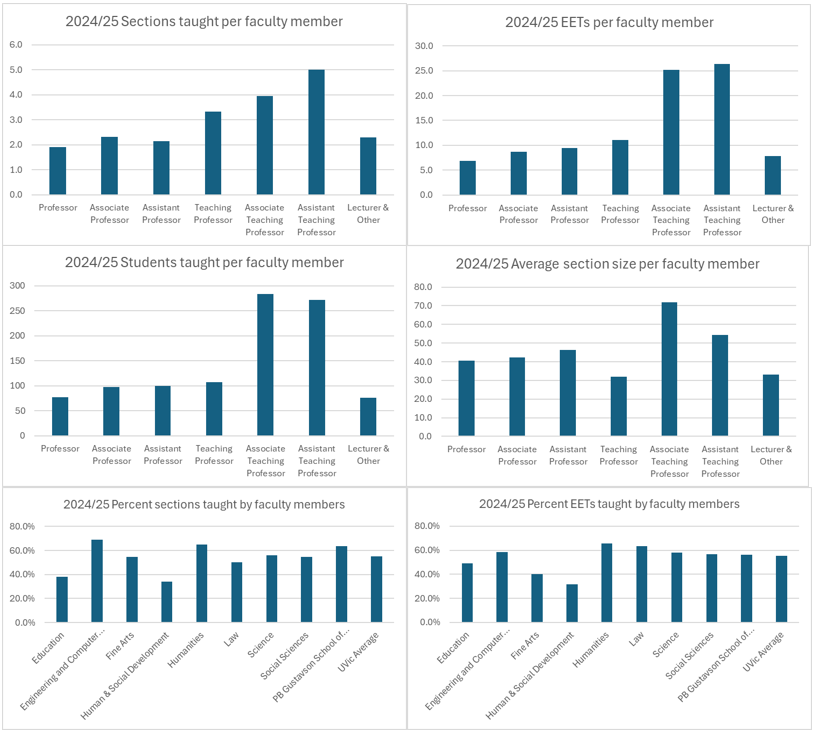
Source: Banner HR and Banner Student.
Teaching in today’s post-secondary environment involves navigating a range of evolving factors. Instructors work within a context shaped by expanded access to academic accommodations, diverse student needs, and the growing use of technologies including GenAI tools. To help illustrate the scale, approximately 3,200 of UVic’s 22,000 students released an accommodation letter in 2024/25; most requests were for additional time and distraction-reduced environments. These developments contribute to a more accessible and flexible learning experience but also require ongoing adjustments in instructional methods, assessment design, classroom management, and central supports and services.
Research
UVic is ranked one of Canada's top comprehensive research universities. The Leiden Rankings, for example, consistently show UVic among the top 5 universities in Canada when it comes to research impact and that UVic has a higher proportion of papers based on international collaborations than any other university in North America.
The following graphs help to illustrate the growing research output of UVic’s talented faculty members. Publications, however, are only one among many types of research outputs. UVic is a proud signatory of the San Francisco Declaration on Research Assessment, supporting responsible research assessment that recognizes and values a wide range of research activities and impacts.
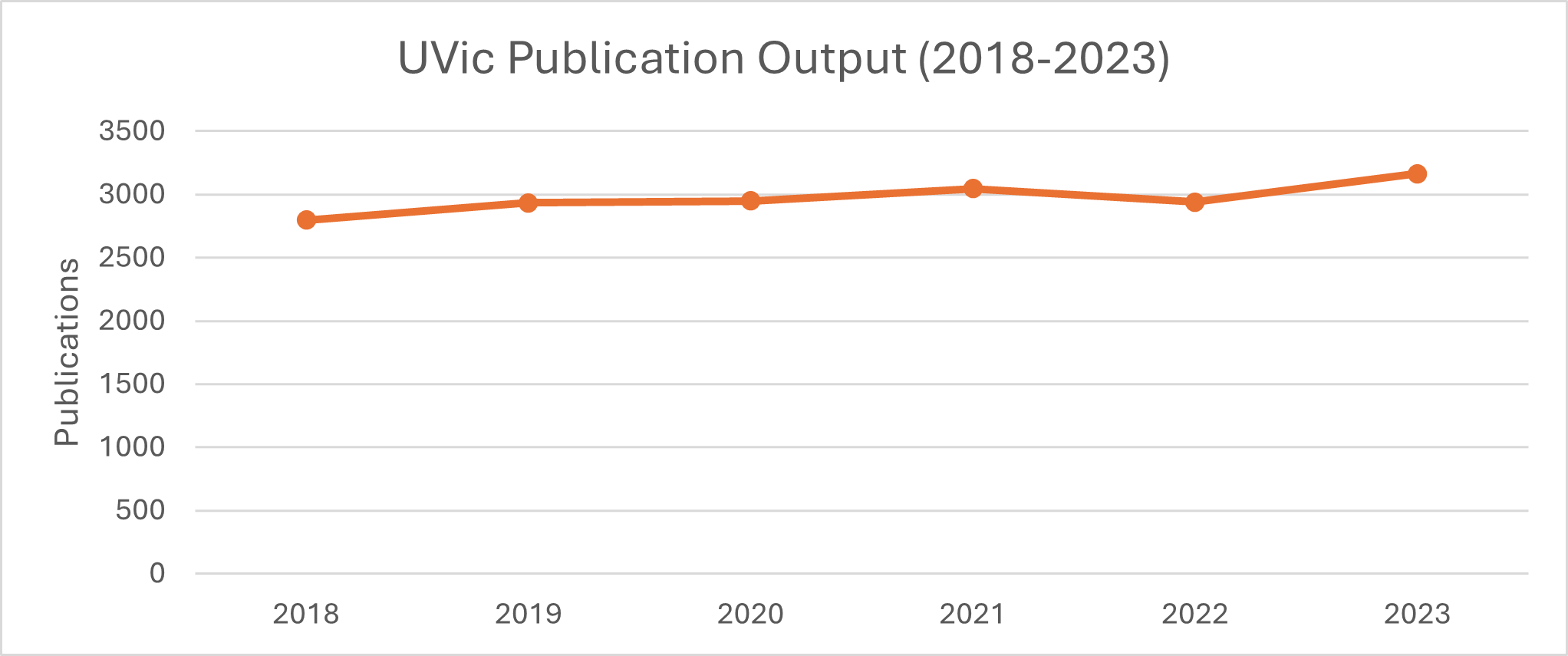
Source: OpenAlex.
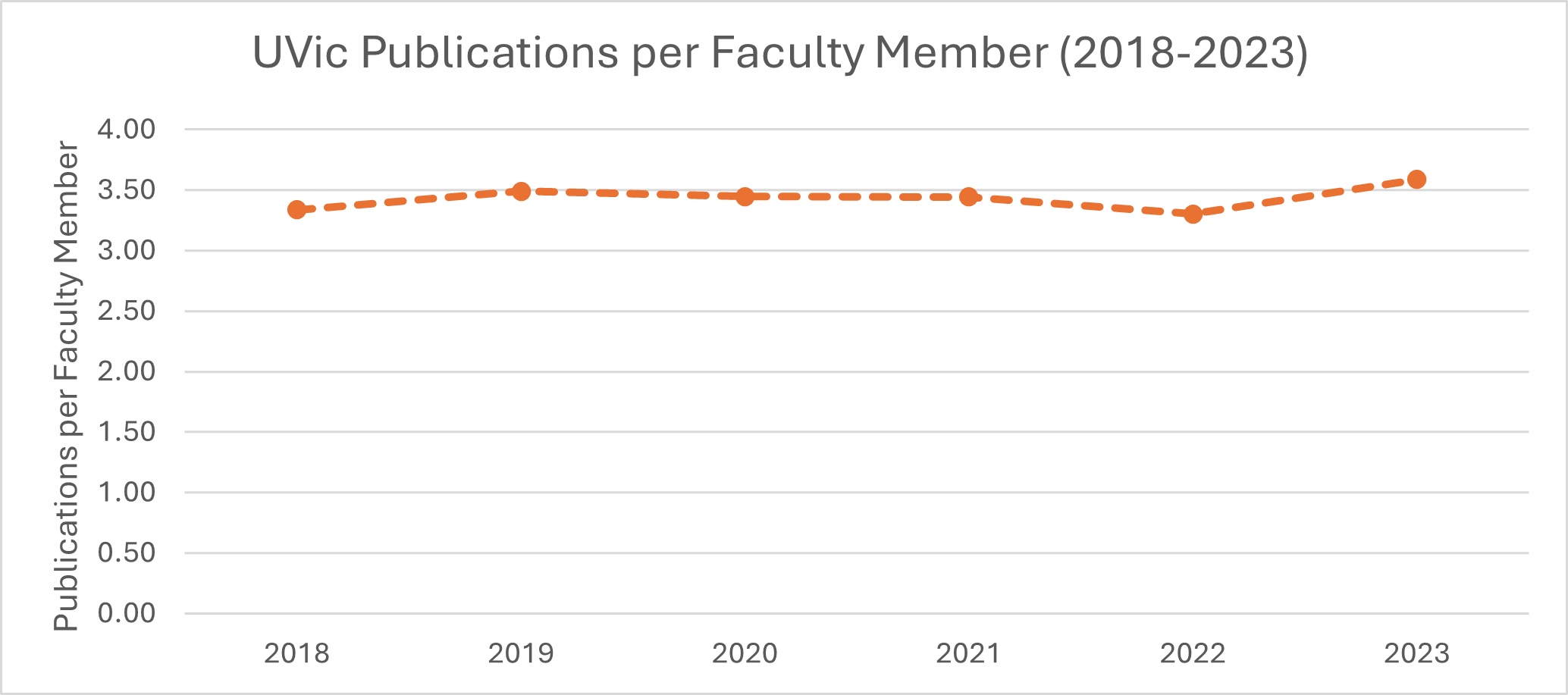
Sources: OpenAlex and Banner HR.

Sources: Publication data from Scopus/SciVal; faculty counts from Statistics Canada. Notes: Universities with medical schools/programs are shown with dotted bars. Publication output differs by discipline and will accordingly differ across institutions based on their different disciplinary mixes. Institutions with medical programs are likely to have higher publication counts and research funding per faculty than those without.

Source: CAUBO – Financial Information of Universities and Colleges.
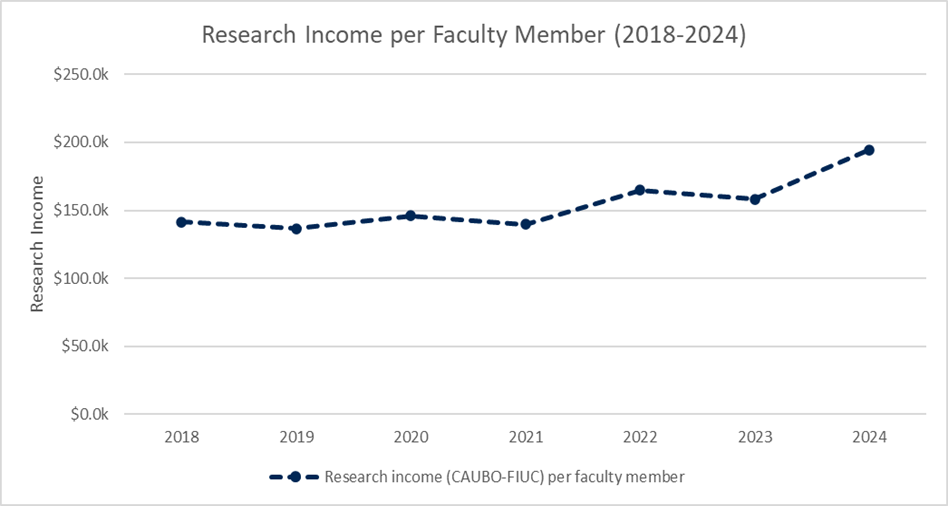
Source: CAUBO – Financial Information of Universities and Colleges.
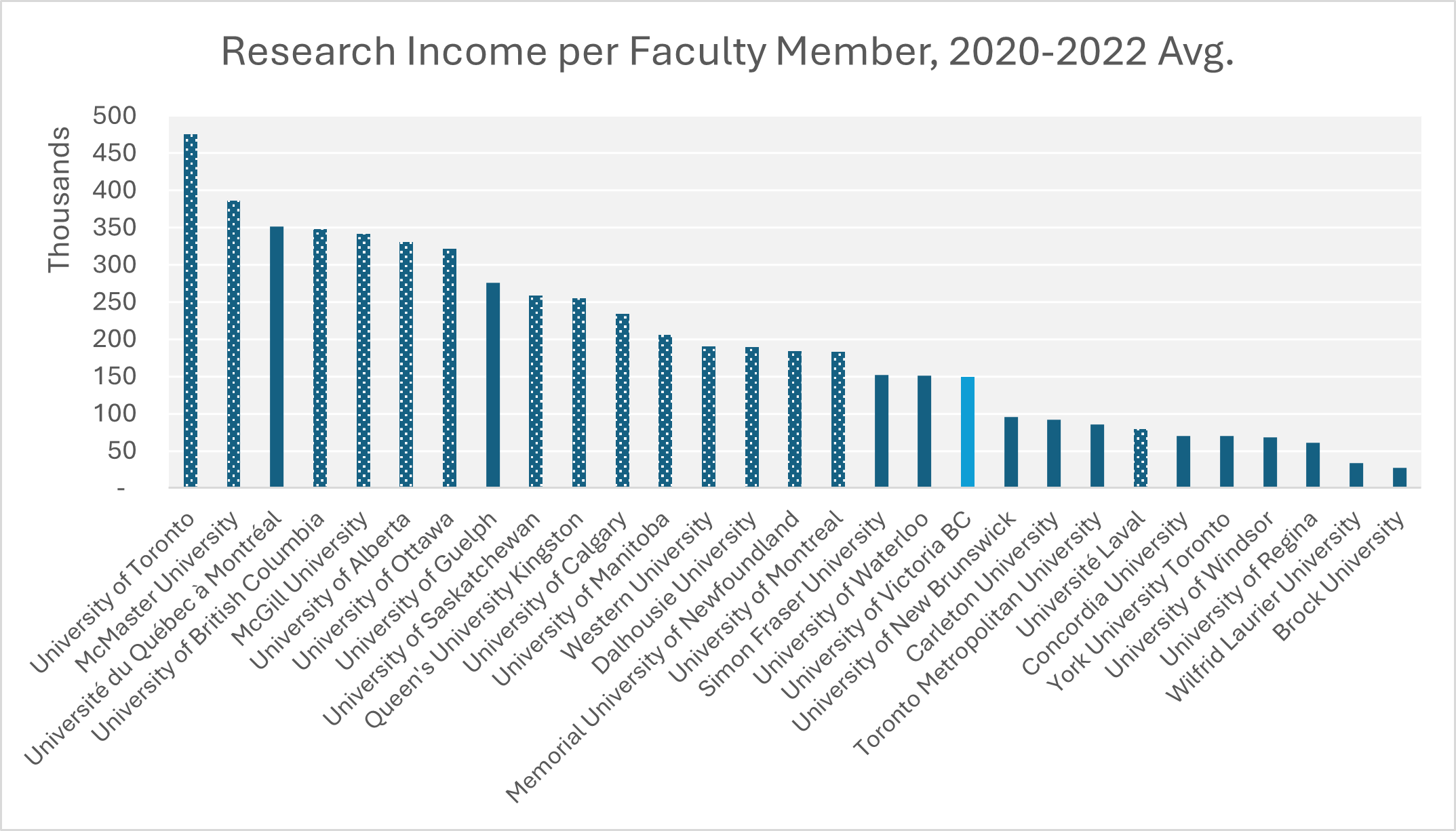
Sources: Research income data from CAUBO; faculty counts from Statistics Canada. Notes: Universities with medical schools/programs are shown with dotted bars. Publication output differs by discipline and will accordingly differ across institutions based on their different disciplinary mixes. Institutions with medical programs are likely to have higher publication counts and research funding per faculty than those without.
Published June 10, 2025
